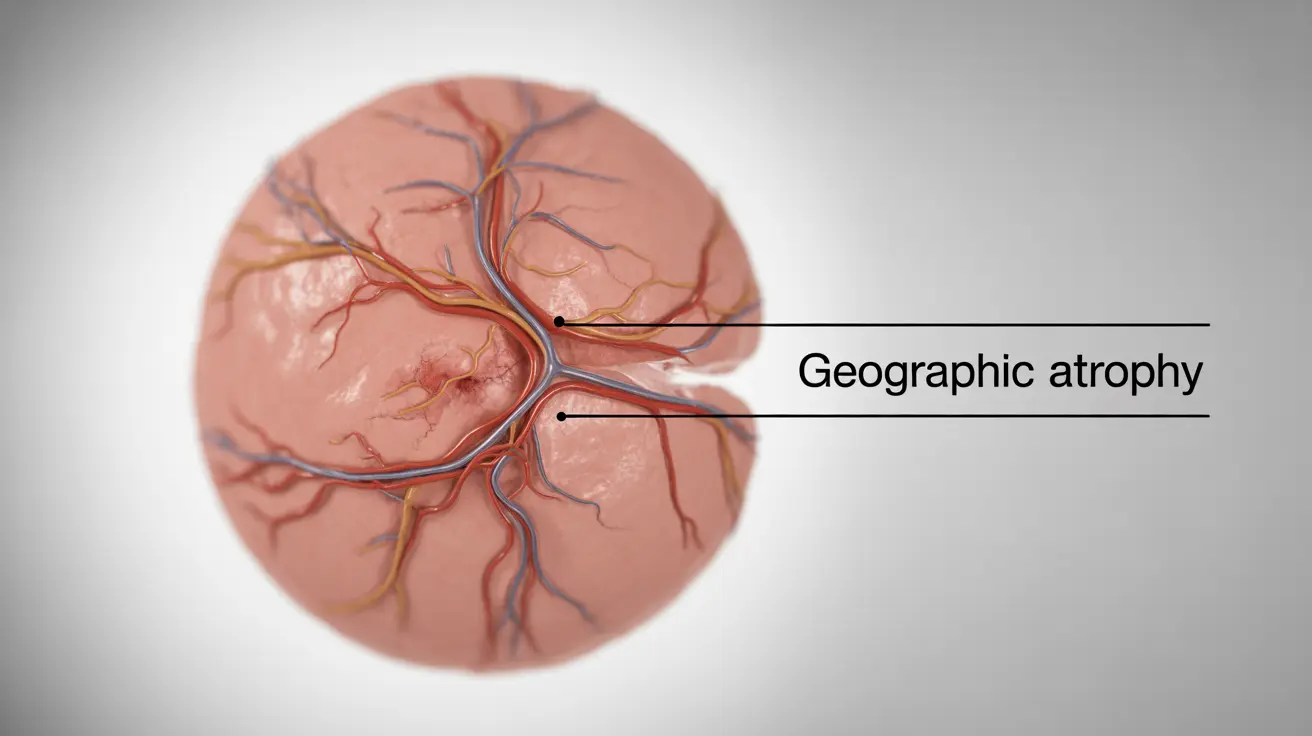Geographic atrophy (GA) is a severe form of advanced dry age-related macular degeneration that can significantly impact vision and quality of life. This progressive eye disease affects the macula, the central part of the retina responsible for sharp, detailed vision. Understanding GA eye disease is crucial for early detection and management of this condition.
While geographic atrophy cannot be cured, awareness of its symptoms, risk factors, and available treatments can help individuals better manage the condition and preserve their vision for as long as possible. Let's explore the key aspects of this challenging eye disease.
What is Geographic Atrophy and How It Affects Vision
Geographic atrophy occurs when cells in the retinal pigment epithelium (RPE) gradually deteriorate, leading to the death of photoreceptor cells responsible for vision. The condition earns its name from the distinctive pattern of damage it creates, which resembles a map when viewed by eye care professionals.
The disease typically affects both eyes, though not always simultaneously or to the same degree. As GA progresses, it can cause significant vision loss in the central field of vision, while peripheral vision usually remains intact.
Common Symptoms and Early Warning Signs
The symptoms of geographic atrophy often develop gradually and may include:
- Difficulty reading or recognizing faces
- Problems adapting to different lighting conditions
- Decreased color perception
- Blind spots in central vision
- Blurred or distorted vision
- Challenges with daily activities requiring detailed vision
Many people with early GA may not notice symptoms immediately, which makes regular eye examinations crucial for early detection.
Risk Factors for Geographic Atrophy
Several factors can increase an individual's risk of developing GA eye disease:
- Advanced age (typically over 60 years)
- Family history of macular degeneration
- Smoking
- High blood pressure
- Obesity
- Poor diet lacking in nutrients
- Prolonged sun exposure
- Cardiovascular disease
Diagnosis and Treatment Options
Eye care professionals use various diagnostic tools to identify and monitor GA, including:
- Comprehensive dilated eye examinations
- Fundus autofluorescence imaging
- Optical coherence tomography (OCT)
- Visual acuity tests
- Amsler grid testing
While there is no cure for geographic atrophy, several treatment approaches and management strategies may help slow its progression:
- Regular monitoring by eye care professionals
- Nutritional supplements (as recommended by doctors)
- Protection from UV light
- Visual aids and adaptive technologies
- Lifestyle modifications
Prevention and Lifestyle Modifications
While not all risk factors can be controlled, certain lifestyle changes may help reduce the risk of GA progression:
- Maintaining a healthy diet rich in antioxidants
- Regular exercise
- Smoking cessation
- Blood pressure management
- Wearing UV-protective sunglasses
- Regular eye examinations
Frequently Asked Questions
What is geographic atrophy (GA) eye disease and how does it affect vision?
Geographic atrophy is an advanced form of dry age-related macular degeneration that causes progressive damage to the central retina. It affects central vision, making it difficult to read, recognize faces, and perform detailed tasks while usually preserving peripheral vision.
What are the common symptoms of geographic atrophy in dry age-related macular degeneration?
Common symptoms include difficulty reading, problems adjusting to different light levels, reduced color perception, blind spots in central vision, and challenges with face recognition. Symptoms typically develop gradually over time.
What are the main risk factors that increase the chance of developing GA eye disease?
The main risk factors include advanced age, family history, smoking, high blood pressure, obesity, poor nutrition, excessive sun exposure, and cardiovascular disease. Some risk factors are modifiable while others, like age and genetics, are not.
How is geographic atrophy diagnosed and are there any treatments available to slow its progression?
GA is diagnosed through comprehensive eye exams, specialized imaging techniques, and vision tests. While there is no cure, management strategies include regular monitoring, nutritional supplements, and visual aids to help maintain quality of life.
Can lifestyle changes help prevent or reduce the risk of geographic atrophy in AMD patients?
Yes, certain lifestyle modifications can help reduce risk and potentially slow progression, including maintaining a healthy diet, regular exercise, avoiding smoking, managing blood pressure, wearing UV protection, and getting regular eye check-ups.




